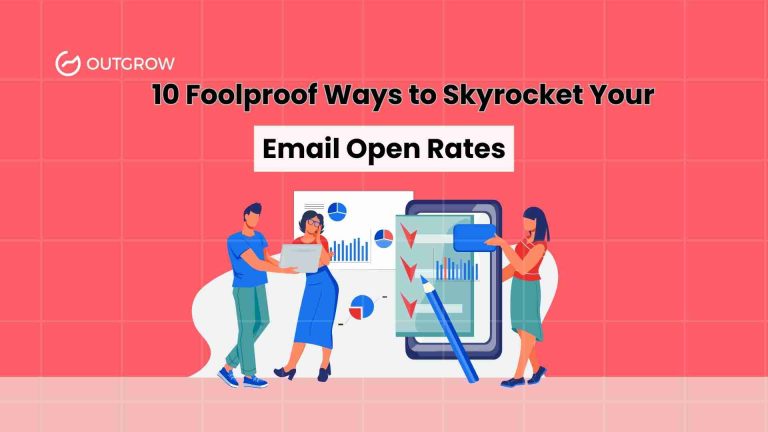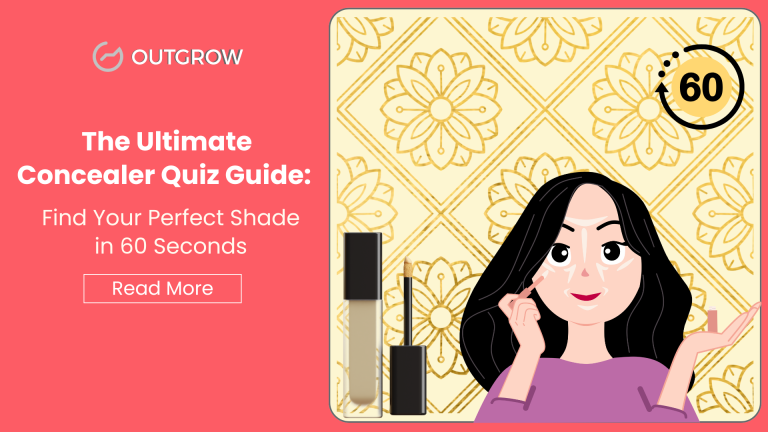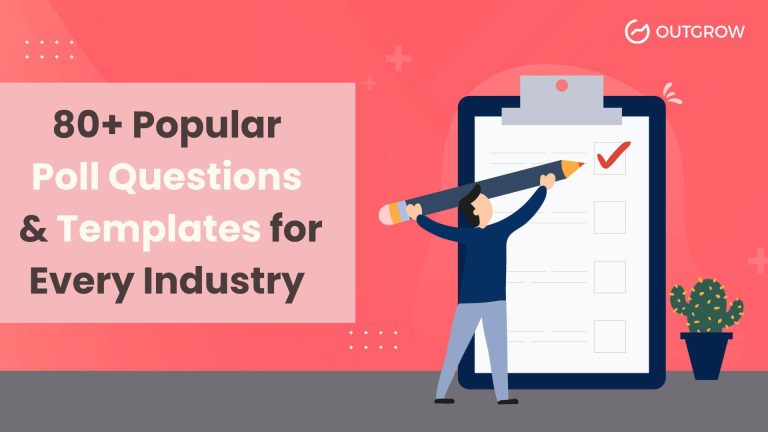Creating Viral Lead Quizzes: Copywriting Tactics That Work
Your last quiz was shared 47 times. The one before that? Maybe 12.
Meanwhile, your competitor’s “Which Coffee Represents Your Personality?” quiz just hit 10,000 shares and generated 3,247 new email subscribers.
What did they do differently?
It’s not luck. It’s systematic quiz copywriting that taps into psychological triggers most marketers completely ignore. The data backs this up: quizzes have an overall conversion rate of 40.1%, meaning just over 4 out of 10 people become leads when they start a quiz.
The Psychology Behind Viral Quiz Success
Table of Contents
People don’t share quizzes because they’re educational. They share them because quizzes make them feel something about themselves.
Interactive content generates up to 80% higher engagement rates than traditional formats (EventFlare, 2024). More importantly, users spend an average of 47% more time engaging with interactive content than static pages.
When someone takes a quiz titled “ Discover Your Unique Leadership Style?“, they’re not just answering questions. They’re seeking validation, discovery, or confirmation of what they already believe about themselves.
The most successful viral quiz creators understand this. They write a copy that transforms a simple questionnaire into a mirror that reflects exactly what the quiz-taker wants to see.
The 4-Part Viral Quiz Framework
1. The Irresistible Hook
Your quiz title determines whether someone scrolls past or clicks through. Here’s what works:
Identity-based titles outperform knowledge-based ones by 340%. According to the Content Marketing Institute, 87% of marketers agree that interactive content catches an audience’s attention more than static content (WebEngage, 2024). Instead of “How Much Do You Know About Marketing?” try “What Type of Marketer Are You?”
The Personality Plus Formula: “What’s Your [Desirable Trait] + [Relevant Context]?”
- “What’s Your Money Personality?”
- “What’s Your Leadership DNA?”
- “What’s Your Creative Superpower?”
The Insider Knowledge Angle: “Can We Guess Your [Secret/Hidden Trait] Based on [Simple Choices]?”
- “Can We Guess Your Age Based on Your Netflix Preferences?”
- “Can We Guess Your Biggest Strength Based on Your Morning Routine?”
2. Questions That Create Investment
Most quiz creators write boring, obvious questions. The pros write questions that make people think, “Wait, how did they know that about me?”
The Progressive Revelation Technique: Start with surface-level questions, then gradually get more personal. This creates psychological investment.
“Pick your ideal weekend activity.”
“What’s your biggest fear in relationships?”
“If you could change one thing about your past, what would it be?”
Choice Architecture Matters: Give 4-5 answer options. Three feels too simple. Six becomes overwhelming. Each option should feel distinctly different but equally appealing to different personality types.
3. Results That Spark Sharing
Your quiz results need to do three things simultaneously:
- Make the quiz-taker feel understood
- Give them something worth sharing
- Position your brand as the expert who “gets it.”
The Validation + Aspiration Formula:
- Start with validation: “You’re a Natural Born Leader”
- Add specific insights: “You see solutions where others see problems.”
- Include the challenge: “But sometimes your vision moves faster than your team.”
- End with transformation: “The right strategies can turn your leadership style into your competitive advantage.”
Make It Shareable: Write results people want to post on social media. Include specific, quotable phrases they’ll want to share.
Bad: “You’re creative and like to think outside the box.” Good: “You’re the rare person who sees opportunity where others see obstacles. While most people follow the path, you create new ones.”
4. The Strategic Call-to-Action
This is where most marketers blow it. They’ve built engagement, created value, and then slapped on a generic “Download our guide” CTA.
The best quiz CTAs feel like a natural next step, not an interruption.
The Personalized Recommendation Approach: “Based on your results as a [Result Type], here are the three specific strategies that will work best for your situation…”
The Exclusive Access Angle: “Want the advanced playbook for [Their Result Type]? I’m sharing the exact blueprint I use with my private clients…”
Advanced Quiz Copywriting Tips
The Curiosity Gap Method
Don’t reveal everything in your quiz title. Create a small mystery that can only be solved by taking the quiz.
“We Can Guess Your Biggest Business Blind Spot in 2 Minutes” works better than “Find Your Business Blind Spot Quiz.”
The Social Proof Integration
Weave social proof directly into your quiz copy: “Over 47,000 entrepreneurs have discovered their productivity type…” “Join the 12% who scored as ‘Strategic Visionaries’…”
The Urgency Without Pressure
Create time-based urgency that doesn’t feel pushy: “Your personalized results expire in 24 hours.” “This assessment takes 2 minutes (most people can’t resist finding out)”
Quiz Distribution That Actually Works
Creating a great quiz is half the battle. Getting it in front of the right people is the other half.
Research shows that content marketing accounts for over half of all lead acquisition methods, making distribution strategy critical to your quiz’s success.
The Seed Strategy: Before launching publicly, send your quiz to 20-30 people in your network. Ask them to take it and share if they found it interesting. This creates initial momentum.
The Collaboration Multiplier: Partner with 3-5 complementary brands. Each promotes the quiz to their audience in exchange for a co-branded version they can use with their followers.
The Platform-Specific Approach:
- LinkedIn: Focus on professional identity quizzes
- Facebook: Personality and lifestyle-based quizzes perform best
- Instagram Stories: Use the quiz sticker feature for micro-quizzes that lead to your main quiz
Pro Tip: The most successful quiz marketers use specialized platforms that automatically optimize for different social media formats and provide detailed analytics on sharing patterns. Tools like Outgrow make this data collection seamless, turning sharing insights into gold when planning your next viral quiz campaign.
Testing Your Way to Viral Quiz Success
The difference between a quiz that gets 100 shares and one that gets 10,000 often comes down to testing small details. In conversion optimization tests, quiz funnels can achieve conversion rates more than 5 times higher than standard lead forms.
Test Headline Variations: Run A/B tests on your quiz titles. Change one word at a time. “What’s Your Money Personality?” vs. “What’s Your Wealth Personality?” can show dramatically different results.
Question Order Matters: Test starting with your most engaging question first vs. following a logical progression. Sometimes the unexpected approach wins.
Results Page Length: Test short, punchy results vs. longer, more detailed explanations. Different audiences prefer different depths of analysis.
The Power of Professional Tools: While you can create basic quizzes on free platforms, the highest-performing viral quizzes use dedicated quiz builders that offer advanced features like conditional logic, detailed analytics, and seamless integrations. Platforms like Outgrow have become the go-to choice for marketers who need the sophisticated testing capabilities that separate amateur quizzes from viral sensations.
The Compound Effect of Great Quiz Copy
When you nail your quiz copywriting, something interesting happens. People don’t just take your quiz once. They share it, then come back to see what other quizzes you’ve created.
This creates a compound effect where each new quiz builds on the success of previous ones. Your audience grows, your email list expands, and your brand becomes known as the company that “gets” their audience.
The brands winning with viral quizzes aren’t necessarily the ones with the biggest budgets. They’re the ones who understand their audience’s deepest desires and reflect those back through carefully crafted quiz copy.
Your next quiz could be the one that changes everything for your business. The question is: Will you use these tactics to make it happen?
Many marketers start with basic quiz builders, but the brands generating serious results quickly move to platforms designed specifically for lead generation. Solutions like Outgrow offer the advanced features, analytics, and integrations that turn a simple quiz into a powerful growth engine.
Take Your Quiz Copywriting to the Next Level
You now have the framework, psychology, and tactics used by the most successful viral quiz creators. The difference between knowing these strategies and implementing them successfully often comes down to having the right quiz maker platform.
Ready to create viral quizzes that actually convert? Outgrow’s advanced quiz maker gives you everything you need to implement these copywriting strategies effectively. From A/B testing headlines to tracking sharing patterns, you’ll have the data and tools to optimize every element of your quiz copy.
Start building your viral quiz today and watch your engagement rates soar while your email list grows exponentially. Your audience is waiting to discover something new about themselves – give them a quiz experience they can’t resist sharing.
Frequently Asked Questions:
The sweet spot is 7-12 questions. Research shows that quizzes with fewer than 6 questions feel too simple and don’t create enough investment, while quizzes with over 15 questions see significant drop-off rates. Most viral quizzes that generate thousands of shares fall within the 8-10 question range because this provides enough depth for meaningful results without overwhelming participants.
Tuesday through Thursday, between 10 AM and 2 PM, typically see the highest initial engagement rates. But here’s the key: viral quizzes gain momentum over 3-7 days, not hours. Focus more on your launch strategy (seeding to your network first) than the exact timing. The most successful viral quizzes often start slow and build momentum through strategic sharing and partnerships.
Write results that make people look good to their network. Avoid negative traits or results that might embarrass someone. Instead, focus on aspirational qualities, unique strengths, or rare personality types. Use phrases like “You’re part of the 8% who…” or “Your rare combination of…” People share content that enhances their personal brand, so make your results feel like a badge of honor worth displaying.
This depends on your goal. For maximum viral spread, show results immediately and ask for an email after. For lead generation, you can gate results, but expect 60-70% fewer shares. A hybrid approach works well: show a teaser of their result, then require an email for the “complete analysis.” This maintains some viral potential while still capturing leads. Test both approaches with your audience to see what works better for your specific goals.

I am a Marketing analyst with a passion for optimizing content and paid marketing strategies. Continuously seeking innovative approaches to boost ROI and engagement at Outgrow.





